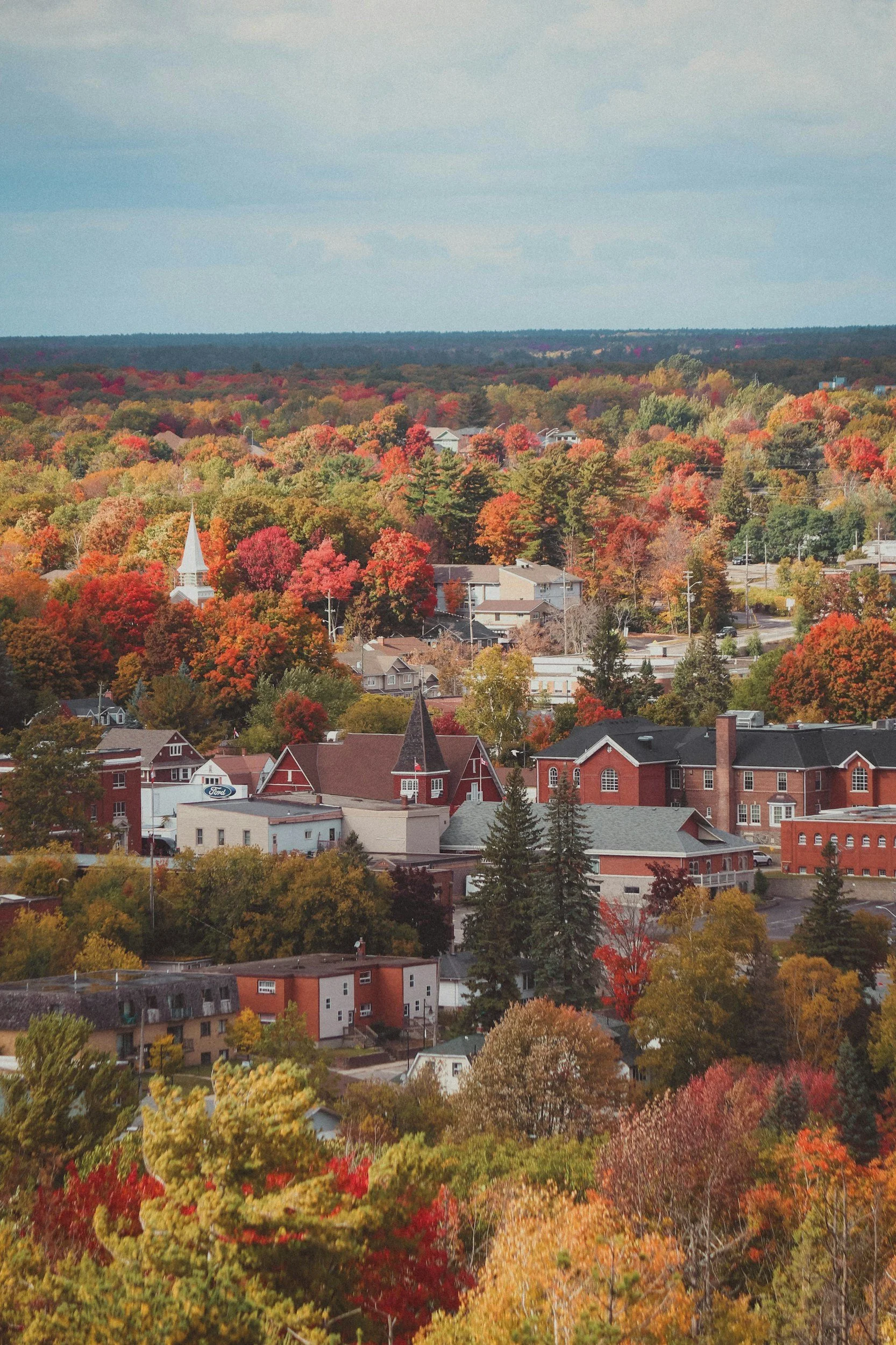Why It’s Important to View Tourism Through a Rural Lens
Tourism is one of the largest industries in the world, but rural America remains one of its most misunderstood and under-analyzed sectors. While travel research and investment often center on gateway cities and iconic attractions, much of the country’s geography—and potential—lies beyond the metropolitan map. And yet, rural tourism continues to be treated as an afterthought: under-measured, under-supported, and under-estimated.
It’s time the U.S. tourism industry developed a sharper lens—one focused on the realities of rural communities.
No National Advocate
The U.S. is one of the few countries in the world that lacks a centralized national tourism organization dedicated to data tracking and policy development. Rural destinations tend to be most negatively impacted by this lack of organization because they typically operate with fewer resources, smaller teams, and limited access to infrastructure and data tools. Without national coordination, these communities are left to navigate tourism development in isolation, making it harder to compete for attention, attract funding, or advocate for their needs at the state and federal levels. This absence of national coordination means rural tourism lacks not only visibility, but also strategic direction, investment prioritization, and a unified voice in tourism policy. As a result, rural communities are unable to fully leverage tourism as a tool for economic development or compete for attention alongside better-resourced urban markets.
Many countries around the world—including Canada, Spain, and Japan—have national tourism organizations that not only promote tourism but actively track rural trends, support regional collaboration, and allocate funding for rural destination development [1]. Without a comparable structure, the U.S. continues to miss out on the full economic, cultural, and social potential of rural tourism.
Data Desert
Without a national tourism board or an organization dedicated to rural tourism, it is nearly impossible to track the full scope and potential of the sector. Analysts attempt to capture rural tourism by lumping it into broad categories like "outdoor recreation" or by tracking short-term rental activity in areas with no hotels—but these approaches miss key dimensions of the rural tourism story. Rural tourism overlaps with multiple sectors—such as cultural tourism, heritage sites, local events, and seasonal labor—each uniquely shaped by its specific community. Meanwhile, most rural DMOs (Destination Marketing Organizations) lack the capacity to fill these gaps: they operate with limited budgets, minimal staffing, and little or no access to data infrastructure or CRM tools. Without meaningful data, rural communities struggle to make their case for funding, participate in national initiatives, or plan for sustainable growth.
In 2022, visitors to U.S. national parks spent $26.4 billion in nearby rural communities—fueling $55.6 billion in economic impact and over 415,000 jobs [2].—And yet, there is no centralized system tracking rural tourism at scale.
A Misalignment with B2B Solutions
Most tourism technology and service providers are built with large, urban destinations in mind. That creates a major disconnect when those same companies try to expand into rural markets.
Take Expedia Group’s Vrbo platform. After acquiring HomeAway, Expedia gained access to thousands of rural vacation rentals across the country—from farm stays in Kentucky to cabins in Idaho. On the surface, this expansion brought rural properties into the digital economy.
But behind the scenes, Vrbo has faced numerous criticisms: poor host support, hidden guest fees, and major safety lapses—including lawsuits involving illegal surveillance [3]. In some cases, rural towns have pushed back against the platform, citing cultural mismatch and a lack of local control. One striking example: in Hochatown, Oklahoma, short-term rental listings exploded from 400 to over 2,000—overwhelming local infrastructure and crashing occupancy rates [4].
This illustrates the disconnect between marketing rural tourism and truly partnering with rural people.
OTAs like Expedia have brought rural properties into their inventory—but without a rural-specific strategy, many hosts and communities are left behind. These platforms often lack:
Local onboarding and training
Community engagement or infrastructure investment
Policy enforcement that protects rural housing and trust
This disconnect extends beyond OTAs to the broader tourism tech landscape. Many tools marketed to DMOs—like data analytics platforms and CRMs—are either not designed for tourism use or are prohibitively expensive for smaller organizations. Large DMOs often pay for three to five specialized subscriptions to manage marketing, data, and stakeholder engagement. In contrast, small rural DMOs are forced to choose between one essential platform or none at all. This deepens the digital divide and makes it even harder for rural destinations to operate efficiently or compete in today’s tourism economy [5].
The Cost of Disconnection
Rural tourism remains deeply fragmented—organized by county lines, divided by funding gaps, and unsupported by formal networks. There is no national rural tourism association. No shared data backbone. And limited support for inter-county collaboration.
This isolation has consequences:
Redundant and disjointed marketing
Weak state and federal advocacy
Lost access to grants, technical assistance, and public-private partnerships
Without viewing tourism through a rural lens, we fail to:
Recognize tourism’s role in rural economic resilience
Build infrastructure that matches rural scale and values
Prevent overexposure, housing disruption, and community mistrust
Capture the full scope of rural America’s contribution to the visitor economy
Develop plans that are community-centered and economically inclusive.
What We Stand to Gain
Viewing tourism through a rural lens isn’t just about identifying gaps—it’s about unlocking opportunity. Rural destinations offer some of the most authentic, culturally rich, and environmentally sustainable travel experiences available in the U.S. These communities are often home to unique heritage sites, outdoor recreation assets, regional cuisine, and storytelling traditions that can’t be replicated elsewhere. By focusing on rural tourism, we can diversify the national visitor economy, distribute tourism’s economic benefits more equitably, and create new pathways for rural revitalization. Moreover, prioritizing rural perspectives allows us to build a tourism system that values community well-being alongside visitor satisfaction—a system rooted in place, not just profit.
A Call for Change
To build a more equitable and effective tourism industry, we must:
Invest in rural-specific research and measurement
Design tools for the scale and realities of small DMOs
Support rural destinations with shared data, marketing co-ops, and community-first policies
Hold OTAs accountable not just for bookings—but for their local impact
Rural communities don’t need outsiders to “fix” them. But they do deserve infrastructure that reflects their value and needs. That starts by changing how we see tourism—and who we build it for.
How RTN Is Responding
The Rural Tourism Network (RTN) was founded to address these very gaps by building a national, connected network of rural tourism providers. At our core, we believe that rural communities thrive when they are connected—not just through infrastructure, but through shared knowledge, collaboration, and community. RTN aims to foster that connectivity by creating opportunities for peer learning, regional campaigns, and mutual support across county lines. We're also developing tools and resources that are specifically tailored to the unique challenges and strengths of rural destinations. Join the Network and the conversation so we can build rural tourism better.
Bibliography
UNWTO & European Commission. (2024). Tourism and Rural Development: A Policy Perspective. https://case-research.eu/app/uploads/2024/06/QG0523426ENN20Tourism20and20rural20development.pdf
National Park Service. (2024). 2022 National Park Visitor Spending Effects. https://www.nps.gov/subjects/socialscience/vse.htm
Vrbo Criticisms and Safety Concerns. Wikipedia. https://en.wikipedia.org/wiki/Vrbo
Hospitality Insights. (2023). How short-term rentals reshape rural communities. https://hospitalityinsights.ehl.edu/airbnb-short-term-rentals-reshape-rural-urban-communities
Internal RTN research & industry benchmarking (2024)



